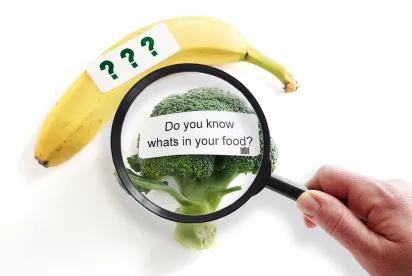On May 31, 2023, the U.S. Environmental Protection Agency (EPA) released a final rule exempting a class of plant-incorporated protectants (PIP) created using genetic engineering, from registration requirements under the Federal Insecticide, Fungicide, and Rodenticide Act (FIFRA), and from the food or feed residue tolerance requirements under the Federal Food, Drug, and Cosmetic Act (FFDCA). 88 Fed. Reg. 34756. PIPs are pesticidal substances produced by plants and the genetic material necessary for the plant to produce the substance. According to EPA’s May 25, 2023, press release, this rule will reduce costs for the regulated community and result in increased research and development activities, consistent with Executive Order 14081 on advancing biotechnology. EPA states that the rule also may result in the commercialization of new pest control options and reduced use of conventional pesticides. The final rule will be effective on July 31, 2023.
EPA states the final rule will allow PIPs to be exempt from FIFRA registration and FFDCA tolerance requirements in cases where they both pose no greater risk than PIPs that EPA has already concluded meet safety requirements, and when they could have otherwise been created through conventional breeding. The final rule reflects the biotechnological advances made since 2001, when EPA first exempted PIPs derived through conventional breeding from FIFRA registration and FFDCA tolerance requirements but did not at that time exempt PIPs created through biotechnology.
In the rule, EPA provides criteria and definitions that identify two categories of PIPs that are exempted through this action from FIFRA registration and FFDCA tolerance requirements:
- “PIPs created through genetic engineering from a sexually compatible plant” in which genetic engineering has been used to insert or modify a gene to match a gene found in a sexually compatible plant (to be codified at 40 C.F.R. Section 174.26); and
- “Loss-of-function PIPs” in which the genetically engineered modification reduces or eliminates the activity of a gene, which then helps make the plant resistant to pests (to be codified at 40 C.F.R. Section 174.27).
For the first exempted category, EPA will require a notification process for EPA to confirm that the PIP is eligible for the exemption. For the second exempted category (loss-of-function PIPs), developers of PIPs can submit to EPA a self-determination letter that the exemption applies. EPA also is establishing recordkeeping requirements for these exempted PIPs, clarifying general qualifications for exemption at 40 C.F.R. Section 174.21; clarifying the relationship between the existing exemptions for PIPs from sexually compatible plants (40 C.F.R. Section 174.25) and the newly issued exemption for “PIPs created through genetic engineering from a sexually compatible plant” (40 C.F.R. Section 174.26); and allowing the existing inert ingredient exemption at 40 C.F.R. Section 174.705 to include genetic engineering.
EPA notes that in the future, as biotechnology advances further, it intends to consider exempting additional categories of PIPs from both FIFRA registration and FFDCA tolerance requirements as well as adding categories of exempted PIPs to the list of categories that do not require EPA confirmation of eligibility.
Additional information, including the response to comment document, is available in docket EPA-HQ-OPP-2019-0508.
Commentary
This final rule is the next step for EPA’s Office of Pesticide Programs (OPP) on the path of EPA’s regulation of biotechnology pesticide products. It sets forth how OPP will handle products created by “Clustered Regularly Interspaced Short Palindromic Repeats” (CRISPR). In more general terms, CRISPR refers to manipulating plant genes with a method that was not available at the time the first biotechnology regulations were developed by EPA in the mid-1990s. This is why EPA needs to “update” its regulations, which is the purpose of the final rule.
Proponents of biotechnology methods argue that CRISPR allows the genes of plants to be manipulated more precisely and can be used to “simply” drop out a gene or add one from the same -- sexually compatible -- genome of the target plant. It follows that this is much like “traditional plant breeding” only done more precisely and more rapidly. Critics will likely raise questions about whether any product using this method, and not using traditional methods, might have some kind of unexpected result or unintended eventual effect. One can expect some adverse comments regarding these products even though EPA (among many others) lays out a rationale that this is an extension of its current regulations exempting products of traditional plant breeding from regulation under FIFRA/FFDCA (and not exempting such products from other regulatory authorities).
There also were concerns raised in comments submitted in response to the October 9, 2020, proposed rule. In particular, some in industry remain concerned that the final rule creates differential treatment for products due solely to the methods of development (i.e., biotechnology vs. conventional), thus subjecting products created using biotechnology to additional regulatory and recordkeeping requirements, even in cases when those products could have been created using older research and development approaches.
EPA’s basic requirements for biotechnology products that regulate inter-species gene manipulation would not change. Also worth noting is that the rule also would allow a developer to submit the product for EPA review to affirm that it qualifies for the exemption (i.e., a M009 Pesticide Registration Improvement Act (PRIA) action, which can lead to EPA delays in processing). The EPA docket includes a slide deck with a helpful summary of the final rule and its rationale.





 />i
/>i
